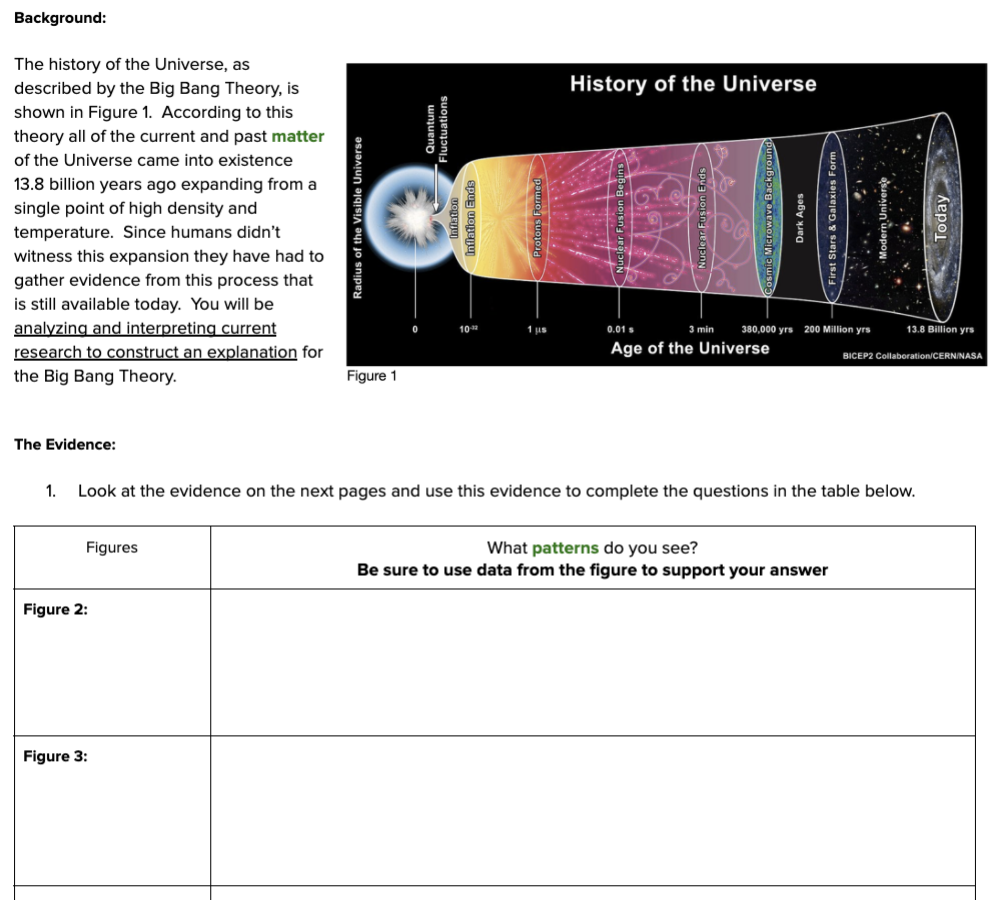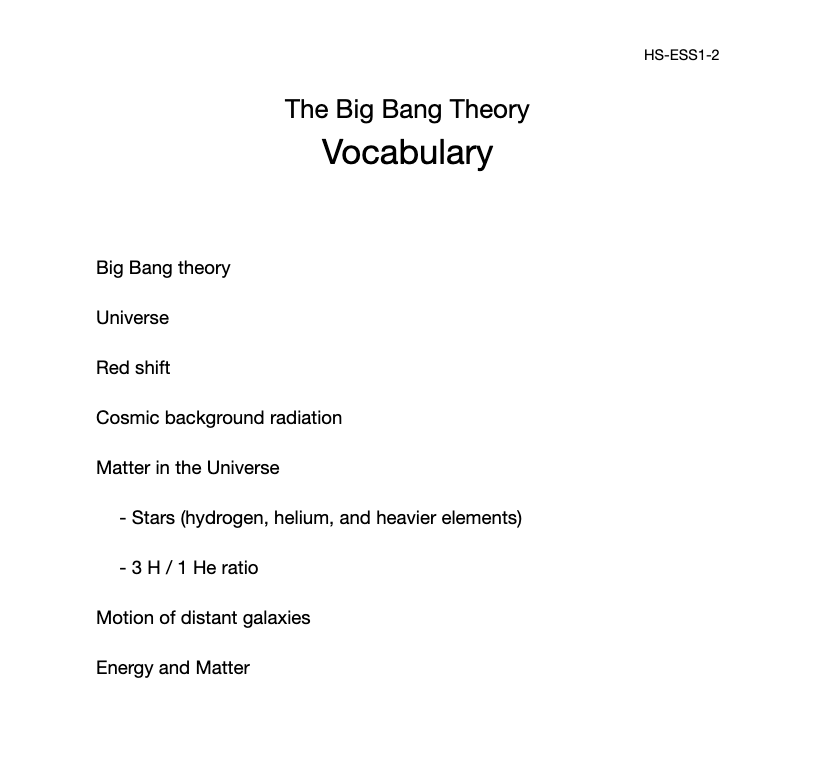HS-ESS1-2: The Big Bang Theory
Construct an explanation of the big bang theory based on astronomical evidence of light spectra, motion of distant galaxies, and composition of matter in the universe. (Energy and Matter)
Clarification Statement: Emphasis is on the astronomical evidence of the red shift of light from galaxies as an indication that the universe is currently expanding, the cosmic microwave background as the remnant radiation from the Big Bang, and the observed composition of ordinary matter of the universe, primarily found in stars and interstellar gases (from the spectra of electromagnetic radiation from stars), which matches that predicted by the Big Bang theory (3/4 hydrogen and 1/4 helium).
Assessment Boundary: none
Science Practices
Constructing Explanations
Disciplinary Core Ideas
PS4.B: Electromagnetic Radiation
ESS1.A: The Universe and Its Stars
Crosscutting Concepts
Energy and Matter
Assessments
The Wonder of Science Assessments
Shared Assessments
The following assessments were shared by teachers implementing the NGSS. Many of these are drafts and should be used accordingly. Feel free to improve these assessments or contribute your own. Learn more here.
Instructional Resources
Mini Lessons
The Wonder of Science Resources
Anchor Charts
Phenomena
Videos
Learning Plans
Storylines
Common Core Connections
ELA/Literacy
RST.11-12.1 - Cite specific textual evidence to support analysis of science and technical texts, attending to important distinctions the author makes and to any gaps or inconsistencies in the account.
WHST.9-12.2 - Write informative/explanatory texts, including the narration of historical events, scientific procedures/ experiments, or technical processes.
Mathematics
HSA-CED.A.2 - Create equations in two or more variables to represent relationships between quantities; graph equations on coordinate axes with labels and scales.
HSA-CED.A.4 - Rearrange formulas to highlight a quantity of interest, using the same reasoning as in solving equations.
HSA-SSE.A.1 - Interpret expressions that represent a quantity in terms of its context.
HSN-Q.A.1 - Use units as a way to understand problems and to guide the solution of multi-step problems; choose and interpret units consistently in formulas; choose and interpret the scale and the origin in graphs and data displays.
HSN-Q.A.2 - Define appropriate quantities for the purpose of descriptive modeling.
HSN-Q.A.3 - Choose a level of accuracy appropriate to limitations on measurement when reporting quantities.
MP.2 - Reason abstractly and quantitatively.
*Next Generation Science Standards is a registered trademark of Achieve. Neither Achieve nor the lead states and partners that developed the Next Generation Science Standards were involved in the production of this product, and do not endorse it. Visit the official NGSS website.






























